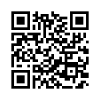Competency construct model for critical reading in non-literary texts based on the framework of the Indonesian National Qualification (KKNI)
Downloads
The ability to read is a language skill that is very important in supporting general academic abilities. Based on research, most study programs at higher education institutions do not include critical reading as a subject. For this reason, this study aims to produce a construct model of critical reading competencies in non-literary texts which is used as a guideline for evaluating learning outcomes (LO) in critical reading classes. The ptesent study is developmental research with the stages of preliminary study activities, literature studies, field analysis, and competency product development. The data source for the study is analysis of data needs to build critical reading competences. Results of the study show that there are five steps of activities carried out in critical reading, namely: 1) surveying the text, 2) understanding the contents of the text, 3) analyzing the text, 4) criticizing the text, and 5) evaluating and publishing. Step (1) determines the type of text to be criticized, identifing the identity and background of the author. Step (2) determines the theme of the text, shows the characteristics of the text, and states the main ideas of each paragraph. Step (3) identifies the structure of the text, states facts and opinions, determines the pattern of paragraph development, identifies relationships between main ideas and explanations, restates implied meanings, and understands the relevances of the relationships among text structures. Step (4) shows the discrepancy between the theme and the content, the description in each part of the text, the ideas in the paragraphs, the details of facts, and the author's arguments. Step (5) assesses the accuracy and suitability of the facts. The final stage is publication of results showing strengths and weaknesses of the text.
Keywords: construct model, critical reading, non-literary text
Downloads
Borg,W & Gall, M. D. (1989). Educational Research. New York & London: Longman.
Diana, Purwati Zisca. (2014). Teknik Membaca SQ3R dalam Membaca Kritis untuk Penguatan Pendidikan Karakter di Perguruan Tinggi [Technique of SQ3R in Critical Reading for Strengthening of Character Education in the Higher Learning]. CARAKA, Volume 1, No. 1 Edisi Desember 2014.
Harjasujana, Ahmad. (2012). Membaca Kritis [Critical Reading]. Jakarta: Modul Universitas Terbuka [Open University Module].
Harris, A. Kholid.dan S. Lilis. (1998). Materi Pokok Membaca 1 [Main Materials Reading 1]. Modul. Jakarta: Departemen Pendidikan dan Kebudayaaan. Proyek Penataran Guru SLTP Setara D3 [Education and Culture Department Upgrading Project Junior High School Teachers Equivalent of D3].
Junining, Esti. (2017). Membaca Kritis, membaca Kreatif (Panduan Praktis Cara Membaca Krtis untuk Semua Kalangan) [Critical Reading, Creative Reading (Practical Guideline the Way to Vritical Reading All Circles)]. Malang: Universitas Brawijaya Press.
Kasiyun, Suharyono. (2015). Upaya Meningkatkan Minat Baca sebagai Sarana untuk Mencerdaskan Bangsa [Efforts in Improving Reading Interest as a Media for Educating the Nation]. https://journal.unesa.ac.id/index.php/ jpi/article/view/140/61
Lesson Developing Critical Thinking Skills. GRE Resources DevelopingCritical Reading Skills. htps://www.brainfuse.com
Novitria, Anri, Dawud, dan Gatut Susanto. (2017). Pengembangan Model Pembelajaran Membaca Kritis Teks Argumentasi untuk Siswa Kelas X SMA/SMK [Developing Critical Reading Learning Model Argumentation Texts for Year X Students of Senior High School/Vocational School]. Jurnal Pendidikan: Teori, Penelitian, dan PengembanganEducation Journal: Theory, Research, and Development]. . http://journal.um.ac.id/ index.php/ jptpp/article/view/10106/4814
Nurhadi. (2010). Bagimana Meningkatkan Kemampuan Membaca? [How to Improme Reading Competencies?] Bandung: Sinar Baru Algensindo.
Pei, Song. (2021). Computer Flipped Classroom in Critical Reading of College English. Journal of Physics: Conference Series. doi:10.1088/1742-6596/1992/4/042008
Pratama, Rizqy Aji. (2016). Pengembangan Modul Membaca Kritis dengan Model Instruksi Langsung Berbasis Nilai Karakter [Development of critical Reading Module Based on Character Value-based Direct Instructions ]. http:// journal.uinjkt.ac.id/index.php/dialektika
Prayitni. Endah Tri. (2011). Pengembangan Bahan Ajar Membaca Kritis Berbasis Intervensi Responsif [Developing Critical Reading Lesson Materials Based on Responsive Intervention]. Disertasi. Malang: Program Pasca Sarjana Universitas.
Ratanaruamkarn, Siraprapha, dkk [et al]. (2023). Trends in Teaching Critical Reading in the Thai Context. Theory and Practice in Language Studies, Vol. 13, No. 2, pp. 424-431, February 2023 DOI: https://doi.org/10.17507/ tpls.1302.17
Riana. (2021). Kemampuan Membaca Kritis di Tinjau dari Kemampuan Berpikir Kritis dan Minat Membaca pada Siswa Kelas VIII SMP Negeri 3 Gunungsitoli.[Critical Reading Competencies Viewed from Critical Thinking Competencies and Reading Interest in Year VIII Students of State Junior High School 3, Gunungsitoli ] http://ummaspul.e-journal.id/maspuljr/ article/download/2193/715/
Subadiyono. (2017). Pengembangan Buku Teks Membaca Kritis [Developing Textbook for Critical Reading]. BAHTERA: Jurnal Pendidikan Bahasa dan Sastra [Journal of Indonesian Language and Literature Education Study Program], Volume 16 Nomor 1 Januari 2017. https://journal.unj.ac.id/unj/ index.php/bahtera/
Sultan. (2018). Membaca Kritis: Mengungkap Ideologi Teks dengan Pendekatan Literasi Kritis [Critical Reading: Uncovering Text Ideology with the Critical Literacy Approach]. Yogyakarta: Basakara Media.
University of Lelcester. "What Is Critical Reading" www/le.ac.uk succeedinyourstudies. Diakses 9 Oktober. 2016. http:www// salisbury.edu.
Wediasti, Welti. (2021). Upaya Penerapan Teknik Membaca Kritis dalam Meningkatkan Aktivitas dan Kemampuan Memahami Artikel Berita di Media Massa [Efforts in Applying the Critical Reading Techniqe in Improving the Activities and Competencies in Understanding News Articles in the Mass Media]. Jurnal Aghinya Stiesnu Bengkulu Volume 4 Nomor 1 Januari 2021. https://ejournal.stiesnubengkulu.ac.id/index.php/aghniya/article/download/73/61
Wheeler, L. Kip. "Critical Reading of an Essay's Argument".http://web.cn.edu/ kwheeler/reading_basic.html
Wulandari, Catur, dkk. (2021). Ayo! Membaca Kritis [Let's Read Critically]. Yogyakarta: UNY Press
Wuryanto, Hadi & Moch. Abduh. 2022. Mengkaji Kembali Hasil PISA sebagai Pendekatan Inovasi Pembelajaran untuk Peningkatan Kompetensi Literasi dan Numerasi [Re-looking at PISA Results as Innovative Learning Approach to Improve Literacy and Numeracy Competencies ]. https://gurudikdas. kemdikbud.go.id
The authors who publish this journal agree to the following requirements. The author retains the copyright regarding the work being simultaneously licensed below Creative Commons Attribution ShareAlike License.

Jurnal Diksi by Faculty of Languages, Arts, and Culture, Universitas Negeri Yogyakarta is licensed under a Creative Commons Attribution-ShareAlike 4.0 International License.
Based on a work at http://journal.uny.ac.id/index.php/diksi




















